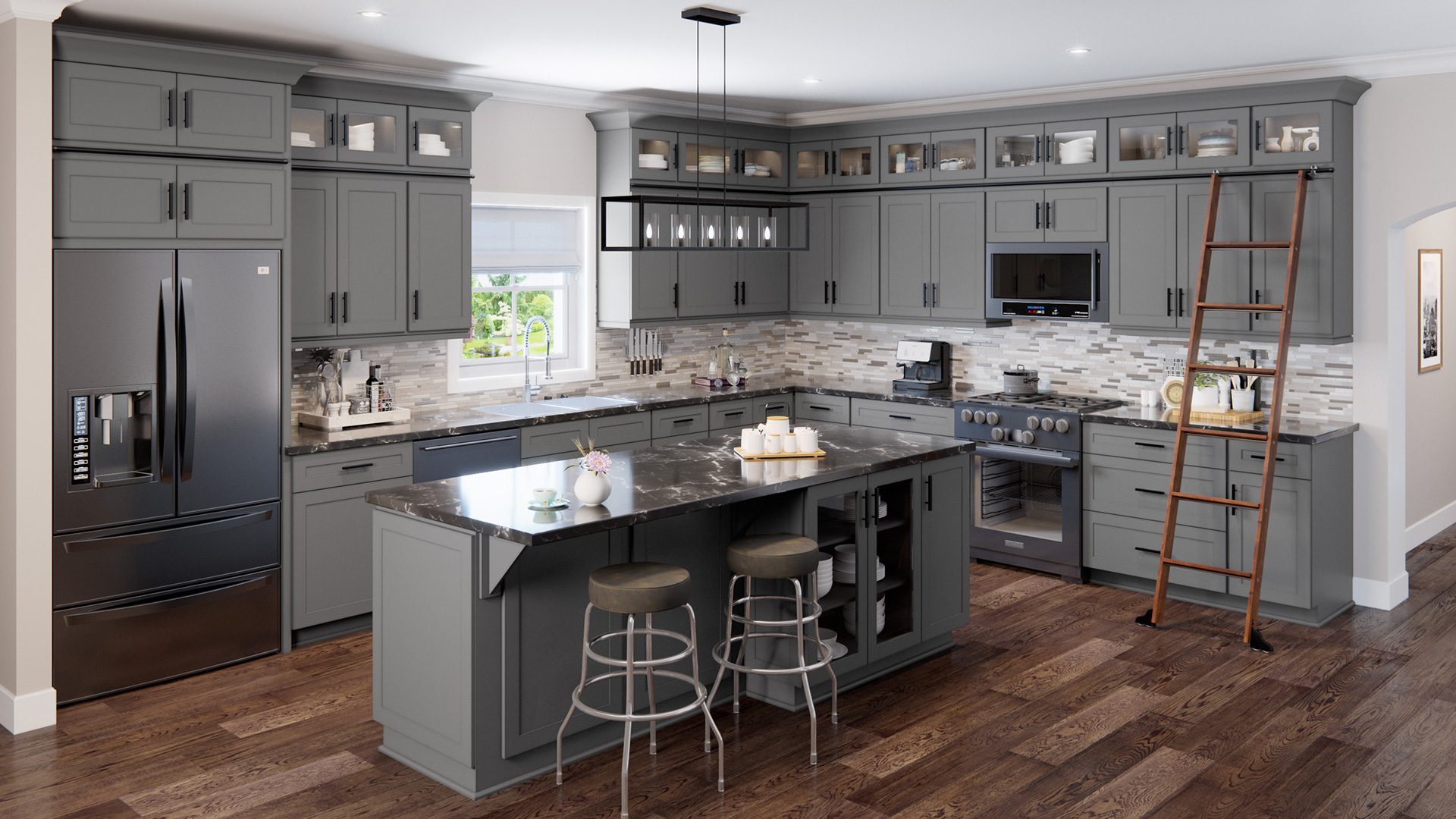Gray Shaker RTA Cabinet Styles & Trends

The seemingly ubiquitous gray shaker RTA (Ready-To-Assemble) kitchen cabinet has infiltrated the home renovation market with a force that borders on hegemonic. This isn’t simply a matter of fleeting fashion; it speaks to a deeper trend in consumer preferences for understated elegance and versatile design. Understanding the nuances of this trend, however, requires a critical examination of style variations, color palettes, and the broader socio-economic forces that have propelled its rise.
Gray Shaker RTA Cabinet Styles and Door Panel Variations
The seemingly simple shaker style offers surprising diversity. The core design – a recessed center panel framed by a raised outer frame – allows for subtle yet significant variations in both the panel and frame profiles. These variations, coupled with hardware choices, dramatically alter the overall aesthetic.
| Door Panel Style | Frame Profile | Hardware Suggestions | Overall Aesthetic |
|---|---|---|---|
| Flat Panel | Clean, Minimalist | Sleek bar pulls, minimalist knobs | Modern, Contemporary |
| Raised Panel | Traditional, slightly ornate | Cup pulls, ornate knobs | Traditional, Transitional |
| Beaded Panel | Subtle detailing | Simple knobs, small pulls | Farmhouse, Cottage |
| Shaker with Glaze | Any of the above with a distressed finish | Oil-rubbed bronze, black | Rustic, Transitional |
Gray Shaker Cabinet Shades and Kitchen Style Compatibility, Gray shaker rta cabinets
The versatility of gray shaker cabinets stems largely from the vast range of gray shades available. Different shades evoke different moods and complement various kitchen design styles. A poorly chosen shade, however, can undermine the entire design.
Gray shaker rta cabinets – The following combinations illustrate successful pairings:
- Light Gray: Pairs well with bright, airy spaces. Ideal for modern kitchens with white countertops and stainless steel appliances. Creates a feeling of spaciousness and calm.
- Medium Gray: Offers a balance between light and dark, suitable for transitional kitchens. Works well with both light and dark countertops, allowing for more design flexibility.
- Dark Gray: Creates a dramatic and sophisticated atmosphere. Best suited for modern or contemporary kitchens with contrasting light countertops and bold accents.
Current Trends in Gray Shaker RTA Cabinets
The gray shaker cabinet trend isn’t static; it’s constantly evolving. Current trends point towards a move away from purely minimalist designs towards more textured and personalized aesthetics.
Key trends include:
- Matte Finishes: Glossy finishes are fading in favor of matte or slightly textured surfaces, which offer a more sophisticated and less reflective look. This is partly a response to the perceived coldness of high-gloss finishes.
- Mixed Materials: Combining gray shaker cabinets with other materials like wood, metal, or stone creates visual interest and depth. This approach is particularly popular in transitional and eclectic kitchens.
- Integrated Handles: Recessed or integrated handles are becoming increasingly popular, offering a clean and minimalist look. This design choice contributes to the overall sense of sophistication and order.
- Two-Tone Cabinets: Combining gray with other colors, such as white or navy, creates a more dynamic and visually engaging kitchen. This allows for greater personalization and customization.
Materials, Construction, and Durability: Gray Shaker Rta Cabinets

The allure of readily assembled (RTA) gray shaker cabinets lies in their affordability and convenience. However, a critical examination reveals a complex interplay of materials, construction techniques, and resulting durability that significantly impacts their long-term value. Understanding these factors is crucial for discerning consumers navigating the often-opaque world of kitchen and bathroom renovations. The choice between seemingly similar products can dramatically affect both the aesthetic longevity and the structural integrity of your project.
The selection of materials directly influences the cabinet’s durability, cost, and maintenance needs. Three primary materials dominate the RTA market: solid wood, plywood, and medium-density fiberboard (MDF). Each offers a distinct set of advantages and disadvantages, making a careful comparison essential.
Material Comparison: Solid Wood, Plywood, and MDF
The following table provides a direct comparison of the three main materials used in the construction of gray shaker RTA cabinets. Note that the cost can vary significantly based on wood type and specific manufacturing processes.
| Material | Durability | Cost | Maintenance |
|---|---|---|---|
| Solid Wood (e.g., Oak, Maple) | High; strong, resists damage, repairable | High | Moderate; requires occasional refinishing, susceptible to moisture damage |
| Plywood | Medium-High; strong, stable, relatively resistant to warping | Medium | Low; generally durable and easy to clean |
| MDF | Low; susceptible to moisture damage, chipping, and scratches | Low | Low; easy to clean, but vulnerable to damage |
RTA Cabinet Construction and Assembly
RTA cabinets arrive in flat-pack form, requiring assembly by the consumer. This process, while seemingly straightforward, introduces potential quality control issues. The use of inexpensive hardware, poorly fitting joints, and inadequate joinery techniques can lead to instability and early deterioration. Variations in manufacturing quality are common, and consumers should carefully inspect their cabinets upon delivery for any defects or inconsistencies. While some level of DIY skill is required, it’s crucial to recognize that assembly flaws can significantly impact the overall cabinet’s lifespan. A poorly assembled cabinet, regardless of material quality, will be structurally unsound and prone to failure.
Factors Influencing Long-Term Durability
The longevity of gray shaker RTA cabinets hinges on several factors extending beyond the initial material and construction quality. Proper care and maintenance are paramount. Exposure to excessive moisture, for example, can cause significant damage to MDF and even solid wood cabinets, leading to warping, swelling, and eventual structural failure. Regular cleaning with appropriate products, avoiding abrasive cleaners, and prompt addressing of any damage are crucial for preserving the cabinet’s appearance and structural integrity. Furthermore, the environment in which the cabinets are installed significantly influences their lifespan. High humidity or fluctuating temperatures can accelerate deterioration. Proper ventilation in the kitchen or bathroom is essential to mitigate these environmental factors. Ultimately, the durability of RTA cabinets represents a trade-off between initial cost and long-term investment in maintenance and potential repairs or replacements.
